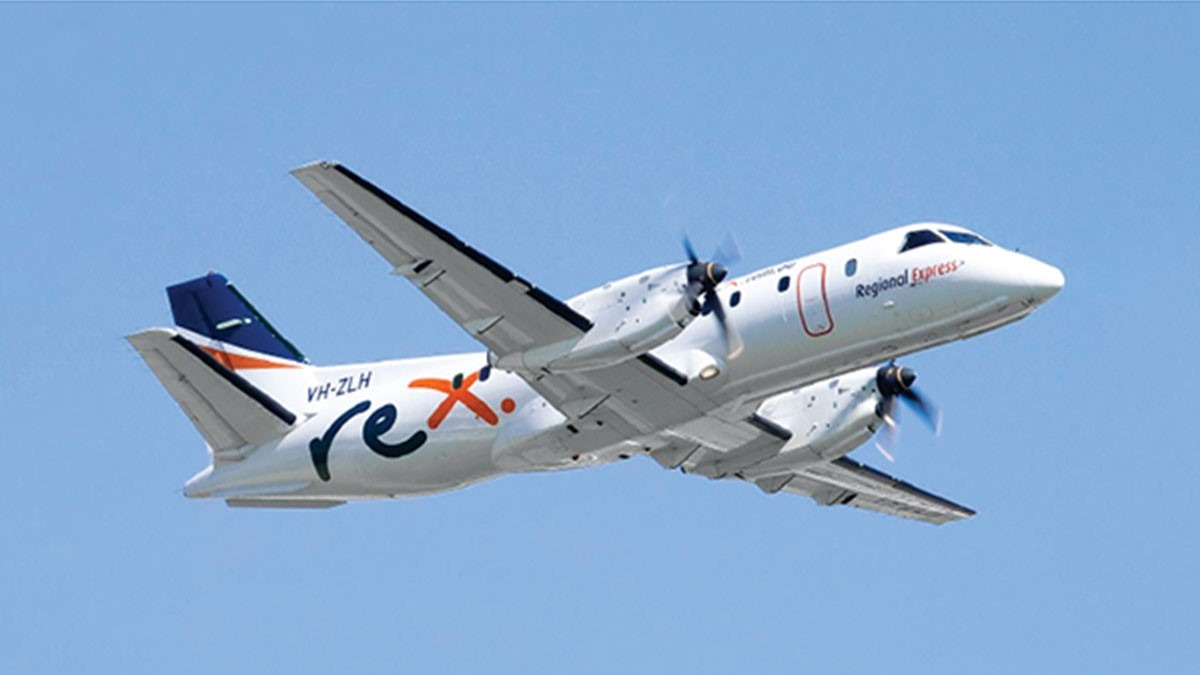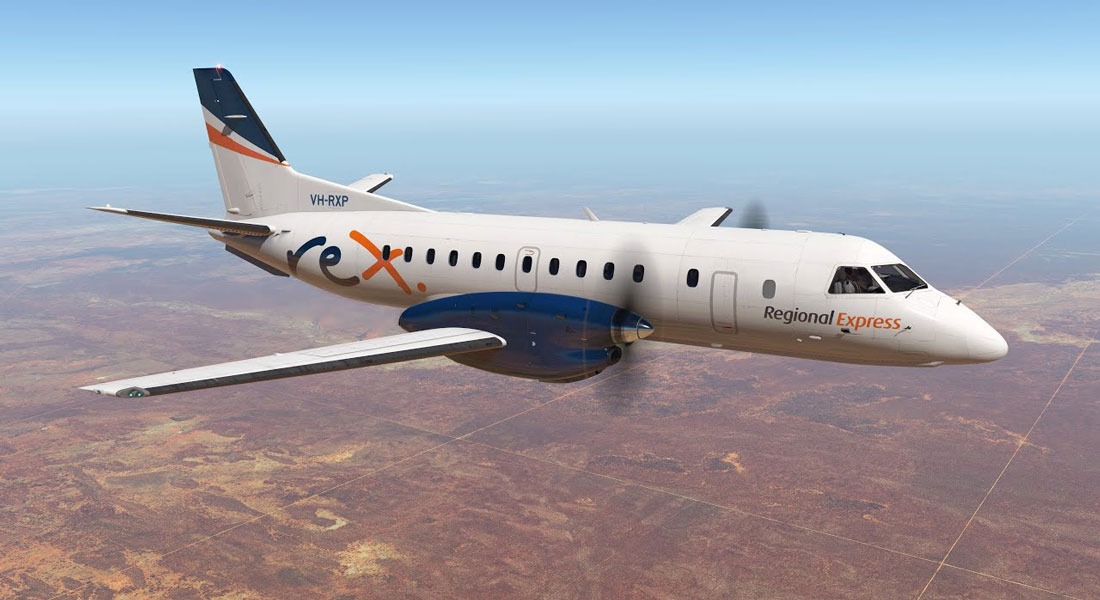Cheaper fuel costs. More reliable engines. Carbon emission cuts. It’s a no-brainer that regional airline Rex has resolved to electrify its aircraft. And Outback Australia might get cheaper tickets and more flights.
Such market forces mean the resulting deep cut to the company’s carbon emissions is gravy to the mix, says Rex Airlines deputy chairman, John Sharp.
Rex operates a fleet of small to medium turboprop aircraft linking regional airports with capital cities. Now it’s partnering with Australian-based Dovetail Electric Aviation to propel its 34-seat Saab 340 aircraft into the future.

Batteries and hydrogen fuel cells will replace jet-fuel tanks. The turboprop engines will be swapped for electric ones built by US manufacturer MagniX.
Because electric engines are generally lighter, simpler and more reliable than combustion engines Rex believes they will be flying significantly quieter aircraft with a 40 per cent cut in operating costs.

“(This) promises to deliver the holy grail in aviation: true sustainability; lower maintenance and operating costs and also less waste as a function of the reuse of existing aircraft,” Sharp says.
“It’s dramatically different. The electric motors are inherently safe — they’re probably safer than any other form of motor,” Sharp says.

“Significantly lower operating costs of electric aircraft will also help to stimulate regional aviation services between communities not currently served by scheduled flights. It’ll make those routes viable for the long-term.
“And it will open up new opportunities in the towns and cities where you would not have thought it would be viable to operate a regional air service.”
Aircraft turbine engines are no different from other fossil fuel combustion engines regarding carbon emissions. What is different is where they dump their emissions.

A large portion is released at high altitudes. Here, the gasses and particles can trigger the formation of cirrus clouds. These act as a blanket retaining ground heat.
The IPCC says this is on top of aeroplane carbon dioxide output which contributes about three per cent to global human-activity-based emissions.





